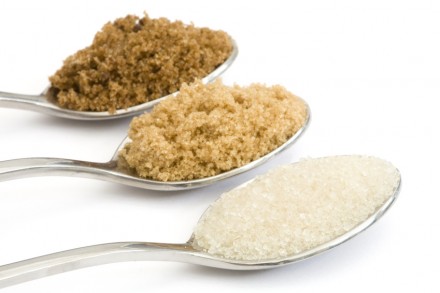Balanced Living
Sugar… What’s the Sweet Alternative?
Posted by Arja on July 10 in Nutrition
Sugar. It’s in just about every darn thing you purchase these days from tomato sauce and marinades, to healthy cereals and “pure fruit puree” juices. It’s often hiding where you least expect it, and unless you get into the habit of reading the labels of everything you purchase I can guarantee you’ll be surprised by just how much you’re consuming each day without even realizing it.

A while back, I talked about how much sugar is hiding in some of the healthier choices you make throughout the day. There’s no question about it, sugar just makes some things taste better. Baked goods, homemade granola, and other yummies just wouldn’t be quite so yummy without it. Eliminating it entirely is challenging (if you have managed to, HUGE high fives!), but attempting to use as little as possible and make better choices when you do is something we can all strive for.
Making a better choice when it comes when it comes to choosing a sweetener should take into consideration not just the effect that it has on your blood sugar levels (commonly referred to as its glycemic index or load) but also the amount of chemical processing involved with creating the final product.
The glycemic index is a measurement of a carbohydrate-rich food that reflects the impact that it will have on your blood sugar levels. Pure glucose is the benchmark at 100 and the scale goes down from there. The lower the number, the lower its impact will be. Sucrose (table sugar) has a glycemic index of 58-65 depending on the list that you look at. This is on the high side. It’s important to note that the glycemic index does not actually reference serving sizes, nor does it take into account that we all metabolize different foods in different ways. That said it’s still a good guide for making better choices.
Chemical processing is another story altogether. The main difference between common, white table sugar and cane sugar which has a light brown colouring is the chemical processing involved with making white sugar white. It also removes any beneficial trace elements at the same time, but that’s not to say that raw cane sugar is a better choice. Articles are also being written questioning the chemical processes used to create some of the popular alternative sweeteners.
Trying to choose a sugar alternative can be confusing. There are so many choices and so much conflicting information about what’s good for you and what’s not. Whatever you choose I encourage you to avoid artificial sweeteners like aspartame because of the health risks (some documented, and in some cases it’s too early to say). Here are a few of the more popular alternatives to table sugar:
Stevia.
This herbal sweetener is derived from the stevia, or “sweet leaf”, plant. It has approximately 300x the sweetness of sugar and has negligible effects on blood sugar levels, making it a great choice for diabetics. Because of it’s extremely sweet taste profile (300x sweeter!!) and slight licorice aftertaste, some people find that stevia just isn’t right for them. Also, be aware that Coco-Cola and Pepsi Co. have now developed their own version of stevia (Truvia and PureVia) by chemically isolating and removing the stevia glycosides from the plant and combining them with sugar alcohols and artificial flavours. Yuck. Nothing natural about that.
Agave.
Agave is a sweetener made from the root of the agave plant. Although it comes from a natural source there is conflicting information about how healthy it actually is. Groups like the Weston Price Foundation and Dr. Joseph Mercola have written articles saying that agave syrup is, in fact, not so healthy for us after all due to the chemical processing used to create it. Agave actually contains more calories per tablespoon than table sugar, but because it is sweeter you can use less making it a lower calorie alternative. The question is, will you use less?
Coconut Palm Sugar.
This is, by far, one of my favourite alternative sweeteners. It truly has a low glycemic index and contains naturally occurring vitamins, minerals and amino acids. There is minimal processing involved to create it, and because it is granular it makes a great sugar substitute for baking. It’s taste most closely resembles brown sugar but it’s far less sweet. The sap is collected from the flower bud of the coconut tree and then dried to become granules. There are some questions about the sustainability of such a process because the loss of the flower means the loss of a coconut, but there are definitely some farmers who are growing trees exclusively for coconuts and others for the sugar.
Honey and maple syrup are also popular alternatives to table sugar. They are not low glycemic index choices, but because of their intensely sweet taste it’s possible to use less, making it a better choice. They are also products that contain trace minerals, antioxidants, and in the case of honey, have powerful antibacterial properties. All of that, combined with minimal processing, makes honey and maple syrups excellent sweetener choices as well, as long as you use them in moderation.
The key to managing your blood sugar levels with respect to sugar and sweeteners is to practice moderation and get in the habit of reading the labels of the packaged products you are buying. Avoid added sugar as much as possible, and get in the habit of not adding sugar to things you are making. When you do need to sweeten something, use an alternative and use it in moderation.



